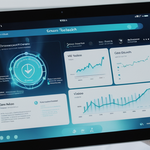
This comprehensive report examines the landscape of insurance and benefits fraud, emphasizing how proactive personal information monitoring, breach detection, and identity exposure awareness serve as critical components in identifying fraudulent activity. Insurance fraud remains one of the most pervasive and costly problems facing the financial services industry, with estimations suggesting fraud costs the United States over $300 billion annually, impacting everything from health insurance systems to workers’ compensation and disability claims. As fraudsters employ increasingly sophisticated tactics enabled by advancing technology, the convergence of breach monitoring, identity verification, and real-time data analytics has become essential for organizations seeking to detect and prevent fraudulent claims before they result in significant financial loss. This report synthesizes current research and industry best practices to provide a thorough understanding of how organizations can leverage personal information security protocols to identify suspicious patterns that indicate potential abuse within insurance and benefits systems.
The Scope and Economic Impact of Insurance Fraud
Insurance fraud has become embedded in the financial landscape, representing a multifaceted challenge that extends across all major insurance sectors. The Coalition Against Insurance Fraud estimates that insurance fraud costs Americans billions of dollars each year, translating into hundreds of dollars in increased premiums for the average American family. What distinguishes modern insurance fraud from historical patterns is both its scale and sophistication, with perpetrators increasingly using advanced technologies to evade detection systems that were designed to catch simpler schemes. The National Health Care Anti-Fraud Association estimates conservatively that healthcare fraud alone costs the U.S. approximately $68 billion annually, a figure that represents a substantial portion of overall fraud losses but does not account for fraud in property, auto, workers’ compensation, life insurance, and disability benefits sectors.
The economic burden of fraud extends beyond immediate financial losses to insurers. When fraudulent claims successfully reach the payment stage, honest policyholders ultimately bear the cost through elevated premiums, reduced coverage options, and decreased accessibility to affordable insurance products. This creates a cascading effect throughout the insurance ecosystem where the financial burden of fraud becomes diffused across the entire customer base. For example, in workers’ compensation insurance alone, fraud is estimated to cost the industry approximately $30 billion annually in the United States, with states like California experiencing between $1 billion to $3 billion in annual fraud losses. The magnitude of these losses necessitates a fundamental shift in how insurance organizations approach fraud detection, moving from reactive investigation models that engage only after a claim has been filed to proactive systems that identify suspicious patterns before claim payment occurs.
The increasing sophistication of fraud schemes reflects the adaptive nature of criminal enterprises targeting the insurance industry. Fraudsters regularly monitor the detection mechanisms insurers deploy and modify their tactics accordingly, creating an ongoing arms race between fraud prevention systems and fraud commission methods. This evolution has been particularly evident in healthcare fraud, where perpetrators have moved beyond simple billing errors to elaborate schemes involving collusion between providers, patients, and criminal enterprises. The complexity of modern fraud schemes, combined with the high volume of claims processed daily across insurance systems, makes manual detection increasingly ineffective and has driven the industry toward machine learning and artificial intelligence solutions that can identify anomalies across millions of transactions in real time.
Common Types of Insurance and Benefits Fraud
Understanding the specific manifestations of fraud across different insurance sectors provides essential context for developing detection strategies. Insurance fraud broadly divides into internal fraud perpetrated by insurance professionals and external fraud committed by policyholders, providers, or organized criminal enterprises. Within healthcare specifically, fraud takes numerous forms that undermine both insurers and the integrity of the medical system itself. Medical identity theft, where criminals steal a person’s medical identity to wrongfully obtain health care goods, services, or funds, represents one of the most pernicious forms of fraud because it affects not only insurance companies but also the medical records and financial health of individual victims. More than 2 million Americans have reportedly been victims of medical identity theft, a crime that frequently results in erroneous information being added to victims’ medical records or the creation of entirely fictitious medical records in their names.
Phantom billing, a practice where providers bill for services that were never rendered or patient visits that never occurred, constitutes one of the most prevalent forms of healthcare fraud. This scheme exploits the inherent complexity of healthcare billing systems where documentation trails may be incomplete or where insurers cannot easily verify whether specific services were actually delivered. Similarly, upcoding involves billing for more expensive services than those actually provided, allowing providers to maximize reimbursement from insurance claims. Unbundling represents another sophisticated billing fraud where providers submit fragmented bills for services that should be billed together at a reduced cost, artificially increasing reimbursement levels. For example, instead of billing for a panel of blood tests at a bundled rate, a laboratory might submit separate bills for each individual test, increasing the total reimbursement received.
Beyond provider-based fraud, patient fraud manifests in various forms including identity swapping, where an insured individual allows another person to use their insurance card to receive medical services, and presenting false documentation or exaggerated medical conditions to justify higher claim amounts. In workers’ compensation systems, fraud frequently involves employees claiming injuries that either never occurred, were not work-related, or are exaggerated to receive disability benefits while actually working elsewhere. Disability insurance fraud similarly encompasses malingering, where claimants exaggerate or fabricate symptoms to portray a more severe disability, as well as unreported income, where individuals continue to earn money while fraudulently collecting disability benefits. The National Insurance Crime Bureau has documented extensive patterns of staged accidents in auto insurance, where fraudsters deliberately cause or simulate accidents to generate insurance claims. These schemes often involve organized fraud rings that coordinate between drivers, passengers, attorneys, medical providers, and repair shops to maximize claim amounts.
The mechanics of fraud also vary by sophistication level. Soft fraud, which accounts for approximately sixty percent of all fraudulent incidents, involves inflating legitimate claims rather than creating entirely false ones. For instance, a policyholder might overstate repair costs, exaggerate an injury’s severity, or claim damages greater than actually incurred. Hard fraud, by contrast, involves premeditated actions to create false claims entirely, such as staging accidents, committing arson to collect property insurance, or fabricating death claims. Hard fraud, while less common, typically results in larger financial losses and carries greater criminal penalties. The prevalence of soft fraud reflects its psychological appeal to otherwise law-abiding individuals who rationalize inflating legitimate claims as merely “maximizing coverage” they believe they are entitled to, often with encouragement from legal professionals, medical providers, or adjuster networks that stand to benefit from larger claim values.
Warning Signs and Red Flags for Detecting Fraud
Identifying potential fraud requires understanding the warning indicators that suggest suspicious activity within insurance and benefits systems. Red flags serve as the first line of defense in fraud detection, alerting investigators and claims processors that a particular claim or claimant warrants deeper investigation. Documentation-related red flags include incomplete or inaccurate medical records, inconsistent coding practices, and missing information that prevents proper claim validation. When medical providers maintain sloppy documentation or submit records with material inconsistencies, it raises questions about whether services were actually provided and whether billing represents legitimate care delivery. Inconsistencies in signatures on applications compared to paramedical exams, discrepancies in reported height, weight, physical descriptions, license numbers, or Social Security numbers all signal potential misrepresentation.
Behavioral and relationship-based red flags often indicate organizational fraud schemes. Multiple applicants or claimants using the same contact information, multiple accounts with methodical spelling variations on names, or accounts with inconsistent personal details suggest identity fraud or fraud ring coordination. When investigators discover accounts with invalid Social Security numbers or Social Security numbers that return different names than listed on accounts, this strongly suggests fraudulent account creation. Similarly, patterns of multiple insurance applications submitted in short timeframes, particularly for large face amounts or with accelerated death benefits, often indicate fraud. The use of post office boxes as primary residence or employer addresses rather than physical street addresses represents a classic red flag, as does the use of money orders or other cash equivalents to pay initial premiums, particularly large single premium payments.
Financial anomalies provide additional detection indicators. When premiums exceed an applicant’s apparent means based on documented income and employment status, or when premiums are paid by someone other than the applicant, this suggests either misrepresentation or potential fraud by a third party seeking to collect benefits. Applicants who cannot provide driver’s licenses or other valid identification, or who possess only temporary or recently issued identification, warrant scrutiny. Applicants demonstrating unusual familiarity with insurance procedures, asking detailed questions about claim processes, or showing excessive interest in how benefits will be paid suggest potential fraudulent intent. Additionally, recent arrivals to the United States, applicants residing or spending significant time in foreign countries, and applicants lacking an insurable interest relationship to the beneficiary all represent warning signs that require verification.
Beneficiary-related red flags indicate suspicious claim circumstances. When beneficiaries lack an insurable interest in the insured person or have no documented relationship to the policyholder, this raises questions about claim validity. Payment processing issues including invalid checking account information, rejected premium payments due to insufficient funds, or declined credit card payments suggest financial instability or potential fraud schemes. Patterns of agents or brokers repeatedly closing cases due to incomplete requirements and then immediately submitting new applications on the same individual, particularly with escalating premium values, indicate potential fraud coordination between insurance professionals and applicants. Excessive controlled business submitted by single agents or brokers, or patterns of writing identical product information and face amounts across multiple applicants (particularly for products with limited underwriting requirements), suggest systematic fraud rather than random individual cases.

The Critical Role of Identity Theft and Data Breaches in Enabling Fraud
The intersection of identity theft, data breaches, and insurance fraud has become increasingly significant as fraudsters leverage compromised personal information to commit sophisticated schemes. When criminal enterprises gain access to stolen personally identifiable information including Social Security numbers, financial account details, health insurance identification numbers, and biometric data, they gain the foundational tools necessary to impersonate legitimate individuals within insurance systems. Medical identity theft specifically enables fraudsters to fraudulently obtain healthcare services, medical equipment, and prescription medications in victims’ names, which then generates false insurance claims submitted to unsuspecting insurers. The scope of data breaches affecting personal information has expanded dramatically, with 27 billion exposed records documented across recent years, contributing to approximately $8.8 billion in personal financial losses annually.
Dark web monitoring has emerged as a critical component of fraud detection infrastructure because stolen personal information frequently appears on criminal marketplaces within hours or days of being compromised. When financial services firms, healthcare providers, or insurers experience data breaches, criminals rapidly extract and sell the compromised information on dark web forums and encrypted marketplaces where other criminals purchase credentials to conduct identity fraud. The existence of these mature international markets for stolen personal information creates ongoing exposure risk for individuals whose data has been compromised. By monitoring dark web activity, organizations can identify when their customers’ information has been exposed, enabling rapid notification and remediation before fraudsters leverage the stolen data to commit insurance fraud. Services providing dark web monitoring continuously scan over 600,000 websites for instances of exposed Social Security numbers, email addresses, phone numbers, and other sensitive identifiers.
The connection between data breaches and subsequent insurance fraud manifests across multiple scenarios. An individual whose health insurance identification number and personal identifying information is compromised in a healthcare provider breach becomes vulnerable to medical identity theft when criminals use the stolen credentials to schedule medical appointments, obtain prescriptions, and generate claims against the victim’s insurance. Workers may discover months or years after a data breach that fraudsters have established false workers’ compensation claims using their stolen Social Security numbers and employment information. Life insurance fraud schemes sometimes involve stolen identity information combined with death information obtained from public records to file false death claims. The fraudster may use fake documentation to convince insurers that the actual policy owner has died and attempt to collect the death benefit.
This exploitation of stolen personal information underscores why proactive breach monitoring represents a fundamental fraud prevention tool. Organizations implementing comprehensive personal information monitoring systems that track when employee, customer, and applicant information appears on the dark web or in data breaches can quickly alert affected individuals and implement additional security controls to prevent fraudulent activity. The Federal Trade Commission has emphasized that organizations must develop comprehensive privacy and security programs including biennial independent assessments to protect sensitive data throughout its lifecycle. When organizations discover that personal information used to identify customers, validate applications, or establish insurance eligibility has been compromised, they can implement heightened verification procedures, request additional documentation, or place fraud alerts on affected accounts before fraudsters successfully leverage the stolen information.
Advanced Technology and AI-Driven Detection Methods
The evolution of fraud detection technology has fundamentally transformed how insurance organizations identify suspicious claims and applicants. Traditional rule-based fraud detection systems relied on predefined rules and fixed thresholds, such as automatically flagging all claims exceeding $10,000 or claims submitted from specific geographic regions. While these systems provided basic protection, they generated excessive false positives that consumed investigator resources on legitimate claims and created customer frustration. These static systems also failed to adapt when fraudsters modified their tactics, requiring manual updates to rules that often lagged behind emerging fraud schemes by months or years. The limitations of rule-based systems motivated the insurance industry to adopt machine learning and artificial intelligence technologies capable of continuously learning from new fraud patterns and adapting detection models in real-time.
Artificial intelligence fraud detection leverages machine learning algorithms trained on historical claims data to identify patterns indicative of fraudulent activity. These systems analyze vastly larger datasets than human analysts could feasibly review, identifying subtle correlations and anomalies that signal fraud. For instance, machine learning models can detect when an individual is using multiple email addresses with slight variations to submit numerous claims across different insurers, or when claim documentation shows inconsistencies between metadata and submitted materials. AI systems process structured data including claims history, policy details, and payment information alongside unstructured data including claim notes, medical records, and documentation images, generating comprehensive risk assessments that account for multiple data types simultaneously. This multimodal analysis capability enables detection of sophisticated fraud schemes that might appear legitimate when examining any single data category but reveal inconsistencies when analyzed comprehensively.
Real-time fraud monitoring represents another technological advancement transforming fraud detection. Rather than analyzing claims after they have been submitted and processed, modern systems screen new claims and applicants as they enter the system, flagging suspicious cases for immediate investigation before potential claim payments occur. This proactive approach prevents fraudulent payouts rather than attempting recovery after funds have been distributed. Advanced fraud monitoring systems collect data continuously about every interaction, including transaction details, user behavior patterns, device information, and location data, creating rich datasets that provide context for accurate detection. These systems generate dynamic risk scores that update as new information becomes available, allowing previously low-risk applicants to be reclassified if new evidence emerges suggesting fraudulent intent.
Natural language processing and text mining technologies enable insurance fraud detection systems to analyze narrative descriptions, claim descriptions, and communication records to identify inconsistencies and suspicious language patterns. These systems can process thousands of claim notes and identify subtle linguistic indicators of deception or inconsistency that human reviewers might overlook. Anomaly detection capabilities, which operate in parallel with risk scoring, identify unusual patterns that deviate significantly from established norms in specific insurance sectors. For example, an auto insurance claim involving vehicle damage in a location that contradicts the insured’s registered address, combined with claim submission from an unusual device location, might trigger anomaly detection even if no individual factor would independently raise suspicion.
Predictive analytics and machine learning models enable insurers to forecast which policies and claims are more likely to present fraud problems based on historical patterns. By analyzing previous fraud cases, these systems can identify risk factors and combinations of characteristics that correlate with fraudulent outcomes. Biometric verification technologies including facial recognition, fingerprint scanning, and iris recognition strengthen identity verification during the claims process. These technologies provide high security and reduce identity fraud by ensuring that the person submitting a claim or applying for coverage is actually the individual they claim to be. Continuous biometric authentication at multiple stages in the insurance lifecycle provides additional verification layers beyond one-time initial identification.
The integration of multiple advanced technologies into comprehensive fraud management platforms enables scalable detection across millions of claims while maintaining reasonable false positive rates. Deloitte predicts that by implementing AI-driven technologies across the claims lifecycle and integrating real-time analysis from multiple data modalities, property and casualty insurers could reduce fraudulent claims and save between $80 billion and $160 billion by 2032. The fraud detection technology market is estimated to grow from $4 billion in 2023 to $32 billion by 2032, reflecting the growing recognition that advanced technology investment provides substantial return on investment through fraud loss prevention. However, these technological advantages must be paired with human oversight, as AI systems can potentially encode biases present in training data and may require contextual judgment to interpret results appropriately.
Identity Verification and Know-Your-Customer Protocols
Know-Your-Customer (KYC) processes represent foundational mechanisms for preventing fraud at the earliest stage of the insurance customer lifecycle. These protocols require organizations to verify customer identity, address, and other relevant personal data before offering insurance coverage. Comprehensive KYC procedures involve customer identification where new applicants must provide valid government-issued identification documents such as passports, driver’s licenses, or national identity cards. These documents enable verification that applicants are who they claim to be and establish a documented baseline of identity information. Customer Due Diligence goes further, requiring insurers to assess risk levels of potential customers based on information provided, checking financial history, employment nature, and origins of funds. For higher-risk customers, Enhanced Due Diligence procedures involve more rigorous verification and documentation requirements.
Continuous monitoring represents a critical component of effective KYC implementation, as fraud monitoring does not conclude at policy issuance but continues throughout the insurance relationship. Insurance companies monitor customer transactions and behavior patterns to ensure no deviation from established norms that might suggest fraudulent activity, money laundering, or other illicit activities. When substantial changes in customer behavior occur, such as sudden dramatic increases in claim frequency or claim amounts that dramatically exceed historical patterns, this triggers re-verification and additional scrutiny. Keeping customer information up-to-date ensures that identity verification remains current, particularly important in situations where applicants have experienced address changes, name changes, or other life circumstances that affect risk assessment.
Biometric verification technologies strengthen KYC procedures by confirming identity through unique physical characteristics. Fingerprint scanning, facial recognition, and iris scanning provide high security and convenience while reducing identity fraud risk by making it substantially more difficult for fraudsters to impersonate legitimate individuals. Some advanced systems employ continuous authentication during the policy lifecycle, using biometric checkpoints to verify identity at multiple transaction points rather than relying solely on initial identity verification. This approach prevents account takeover scenarios where fraudsters gain access to legitimate accounts after initial authentication and modify claims or policy details without the policyholder’s knowledge.
Cloud computing infrastructure enables scalable KYC implementation where customer data can be securely stored, accessed in real-time, and seamlessly integrated across multiple systems supporting consistent identity verification. Cloud-based platforms facilitate collaboration among insurers, regulators, and third-party service providers, enabling information sharing that identifies fraudsters operating across multiple insurers. RegTech (Regulatory Technology) solutions use artificial intelligence and machine learning to automate KYC compliance processes while remaining responsive to evolving regulatory requirements. These solutions automatically track changes in regulatory frameworks and ensure that KYC procedures remain aligned with current requirements, reducing manual compliance burden while improving consistency.

Prevention Strategies and Organizational Best Practices
Effective fraud prevention requires comprehensive organizational approaches integrating technology, personnel training, policy development, and inter-agency collaboration. Establishing clear policies and procedures for reporting workplace injuries and filing insurance claims ensures consistent processes that reduce opportunities for fraud exploitation. Employees should understand these policies and be aware of consequences associated with fraudulent claims, deterring individuals who might otherwise view fraud as a victimless activity or acceptable “padding” of legitimate claims. Education and training programs targeting all staff involved in insurance processes—from call center representatives to claims examiners to accounting personnel—ensure that organizational members can identify red flags and understand their roles in fraud prevention. Regular training that addresses evolving fraud schemes helps staff remain current with emerging tactics and equips them to identify sophisticated attempts that traditional warning signs might miss.
Developing strong internal control systems with appropriate checks and balances prevents both employee fraud and vulnerabilities that external fraudsters could exploit. Separating duties so that no single individual can both authorize payments and execute them reduces fraud opportunities, as does rotating employees through different roles within the organization. Implementing confidential reporting mechanisms and fraud hotlines encourages employees, claimants, and third parties to report suspected fraudulent activity without fear of retaliation. Anonymous reporting channels remove personal risk from reporting potential fraud and enable organizations to identify suspicious patterns that might otherwise go undetected. Conducting regular audits of claims, underwriting decisions, and financial transactions helps organizations identify anomalies requiring investigation before fraudulent patterns become widespread.
Collaboration among industry participants strengthens fraud detection across the entire insurance ecosystem. When insurers share information about suspected fraudsters operating across multiple companies, it prevents individuals from moving from company to company perpetrating similar fraud schemes. Industry conferences and associations dedicated to fraud prevention enable professionals to learn about emerging fraud tactics and share best practices with peer organizations. Partnerships with law enforcement agencies enable investigation and prosecution of organized fraud rings, deterring criminal enterprises that view insurance fraud as a lucrative business activity. Coordination with healthcare providers, automobile repair shops, and other service providers helps identify billing fraud schemes and supplier networks that facilitate fraudulent claims.
Return-to-work programs for workers’ compensation recipients help prevent fraud by facilitating injured workers’ transition back to employment as medical conditions permit. These programs provide legitimate pathways for employees to resume productive work rather than encouraging prolonged disability benefit collection. Documenting claim materials comprehensively including incident reports, photographs and video evidence, witness interviews, and related materials creates audit trails that support fraud determinations if necessary. Detailed documentation also demonstrates that claims have been investigated thoroughly, providing protection if claimants dispute fraud determinations.
Social media monitoring and surveillance investigations have become increasingly important fraud prevention tools, as individuals committing fraud frequently leave digital evidence contradicting their claimed disabilities or injuries. An individual claiming total disability that prevents any work activity may post social media content showing engagement in strenuous activities, attendance at events, or other physically demanding activities that contradict claimed limitations. Extended surveillance blocks (8-hour periods versus shorter 4-hour periods) capture substantially more useful evidence about claimant activities, with longer surveillance yielding nearly 50% more useful evidence and nine times more video footage. Integration of social media investigations with background checks and physical surveillance provides comprehensive assessments of claimant credibility.
Sector-Specific Fraud Detection Approaches
While general fraud prevention principles apply across insurance sectors, specific types of insurance face unique fraud challenges requiring tailored detection approaches. Healthcare insurance fraud prevention must address the complexity of medical billing systems involving multiple parties including providers, patients, equipment suppliers, and pharmaceutical companies. The sophistication of provider fraud in healthcare necessitates advanced data analytics capabilities to identify patterns of unnecessary services, inflated charges, or collusive billing schemes. Healthcare insurers implement auditing processes to verify that medical procedures documented in claims align with appropriate levels of care and medical necessity standards. Collaboration with medical professionals enables insurers to validate that services delivered correspond to clinical evidence and established treatment protocols.
Workers’ compensation fraud prevention requires verification that reported injuries are work-related and that disability levels claimed by employees align with medical evidence. Employers play critical roles in fraud prevention by maintaining safe workplaces that reduce injury frequency and by documenting incidents thoroughly when injuries occur. Early intervention when injuries occur, including immediate reporting and documentation, creates evidence trails that make fraudulent claims more detectable. Return-to-work programs combined with ongoing monitoring of injured employees’ activities help identify fraudsters who exaggerate limitations or claim continued disability while actually working.
Auto insurance fraud detection focuses on identifying staged accidents, padded damage claims, and organized fraud rings operating through networks of providers. The prevalence of organized auto insurance fraud rings necessitates special investigations units dedicated to identifying collusive relationships between insureds, body shops, and medical providers. Social media investigation revealing claimants’ activities inconsistent with claimed injuries helps identify soft fraud involving exaggerated injury claims. Video surveillance of accident scenes and damage assessment locations helps verify that incidents occurred as claimed and that damage actually resulted from claimed accidents rather than pre-existing conditions.
Disability insurance fraud prevention requires sophisticated analysis differentiating genuine disabilities from malingering or unreported work activities. Predictive analytics analyzing historical disability claims help identify applicant characteristics and claim patterns correlating with fraudulent outcomes. Continuous monitoring of disability claimants’ activities through social media investigation and surveillance helps identify individuals receiving benefits while engaging in activities inconsistent with claimed limitations. Third-party verification of medical conditions and treatment helps confirm that claimed disabilities actually exist and persist at claimed severity levels.
Life insurance fraud prevention focuses on authenticating deaths and preventing false death claims. Post-claim audits including verification of death information through vital records help confirm claim legitimacy. Collaboration with reinsurers provides broader perspective on policy holders across multiple insurers, enabling identification of individuals with numerous life policies suggesting potential fraud intent. Awareness of emerging fraud schemes including organized fraud rings targeting life insurance and coordinated false death claims helps investigators identify organized criminal activity requiring prosecution.
Empowering Vigilance: Our Defense Against Fraudulent Abuse
Insurance fraud represents an ongoing challenge requiring continuous evolution in detection approaches, technology deployment, and organizational commitment. The estimated annual cost exceeding $300 billion across all insurance sectors, combined with the impact on honest policyholders who subsidize fraudulent losses through higher premiums, underscores the importance of comprehensive fraud prevention strategies. The integration of proactive personal information monitoring, identity verification, breach detection, and advanced analytics creates a defense-in-depth approach that addresses fraud at multiple stages from policy underwriting through claims payment and beyond. As fraudsters develop increasingly sophisticated schemes enhanced by advancing technology, insurance organizations must similarly advance their detection capabilities to maintain effectiveness.
Emerging technologies including artificial intelligence, machine learning, biometric verification, and advanced data analytics have already demonstrated substantial improvements in fraud detection accuracy and speed compared to legacy systems. These technologies enable insurers to process millions of claims efficiently while maintaining reasonable false positive rates that do not overwhelm investigation resources or frustrate legitimate claimants. However, technology alone cannot solve fraud problems; effective fraud prevention requires organizational cultures emphasizing compliance, employee training maintaining awareness of evolving fraud schemes, and leadership commitment allocating resources to fraud prevention as a strategic priority.
Future fraud detection will likely increasingly emphasize predictive analytics and behavioral modeling that identify fraudsters before they submit claims rather than reactively analyzing submitted claims for suspicious indicators. Enhanced data sharing among insurers, healthcare providers, law enforcement agencies, and regulatory bodies promises to provide broader perspective on organized fraud rings and systematic patterns that might not be apparent within individual organizations. Continued development of biometric authentication technologies and continuous identity verification throughout insurance relationships will strengthen protections against identity fraud and account takeover scenarios. Regulatory frameworks will likely continue evolving to require higher standards for data security, breach notification, and fraud prevention, pushing organizations to implement more sophisticated protections.
The convergence of fraud prevention and customer experience represents an emerging challenge and opportunity for the insurance industry. Advanced fraud detection should not result in excessive friction for legitimate customers or unnecessary delays in processing valid claims. Well-designed fraud detection systems can actually improve customer experience by rapidly processing clearly legitimate claims while focusing investigation resources on genuinely suspicious cases. By implementing proactive personal information monitoring that protects customers from identity theft and breach-related fraud, insurers can demonstrate commitment to protecting customer interests while simultaneously protecting their own financial performance. Insurance organizations that successfully balance rigorous fraud prevention with streamlined processing of legitimate claims will achieve competitive advantages in customer satisfaction, operational efficiency, and financial performance that justify continued investment in advanced fraud detection capabilities.
Protect Your Digital Life with Activate Security
Get 14 powerful security tools in one comprehensive suite. VPN, antivirus, password manager, dark web monitoring, and more.
Get Protected Now





